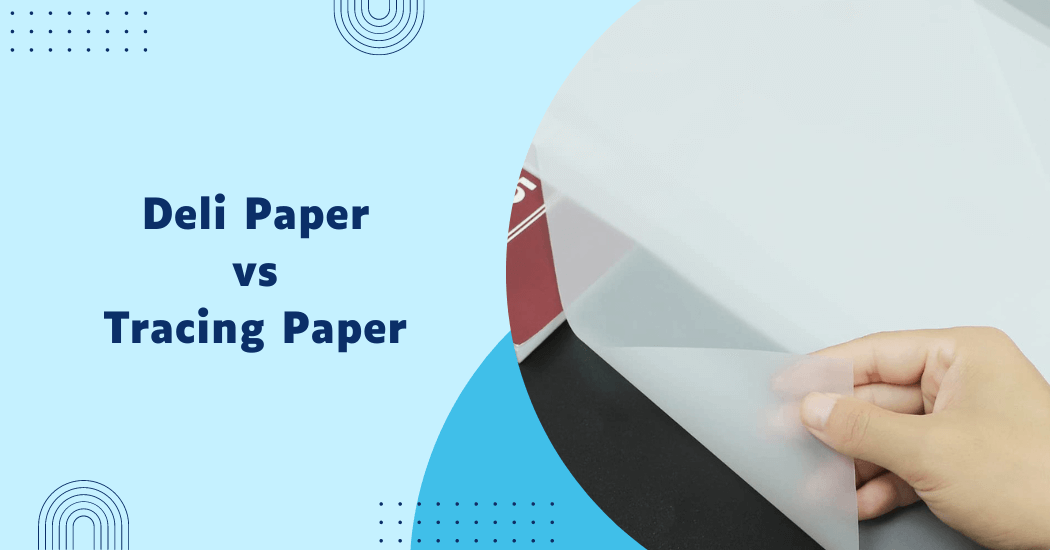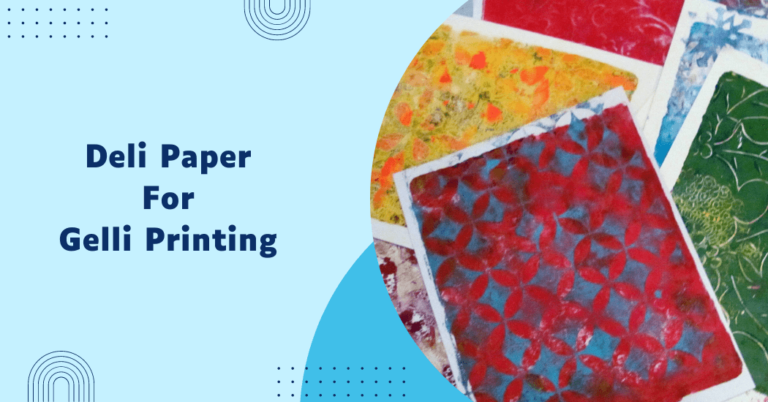Is deli paper the same as tracing paper?
Deli paper and tracing paper, despite their similarities in appearance and common use in certain contexts, serve distinct purposes in various industries and artistic practices. While both papers are thin and translucent, their composition, intended applications and functional characteristics set them apart.
In this discussion we’ll aim to explore the differences between deli paper and tracing paper, shedding light on their unique properties and helping clarify any misconceptions about their interchangeability.
By examining their distinct features and typical uses, we can gain a clearer understanding of these two materials and their respective roles in creative endeavors and practical applications.
Deli Paper vs Tracing Paper
Characteristics of deli paper
Deli paper is typically made from lightweight, food-grade materials designed to be non-stick and moisture-resistant. It often contains a wax coating which helps preserve the freshness of food by preventing grease or liquids from seeping through.
The texture of deli paper is generally smooth to the touch with a slightly glossy surface, specifically tailored to handle a variety of food items without sticking or tearing easily. You can print deli paper with your own logo.
Deli paper is commonly used as serving as a liner for baskets or trays when presenting foods such as sandwiches, burgers or baked goods. It is also frequently used as a wrap for deli meats and cheeses to maintain their condition during storage and transport.
Beyond its primary role in the food industry, deli paper has been embraced by artists as a medium for acrylic painting and mono printing, owing to its translucent quality and unique texture which can add a delicate, interesting layer to art projects.
Characteristics of tracing paper
Tracing paper, also known as drafting paper or translucent paper, is a thin and transparent material usually made from processed wood pulp. Its smooth surface and high translucency allow for easy tracing of images and designs, making it a versatile tool in various fields such as architecture, engineering and graphic design.
Unlike deli paper, tracing paper is not coated with wax and is not intended for use with food. It is more delicate and prone to tearing but its lightweight nature and ability to be easily erased or altered make it a popular choice for creating precise drawings, blueprints and mockups.
Tracing paper is also commonly used in mixed media art projects, as its transparency allows for the layering of images and textures.
Is deli paper the same as tracing paper?
From their characteristics, it is evident that deli paper and tracing paper are not the same. While both papers share a thin and translucent appearance, they serve different purposes and possess unique properties that make them suitable for specific tasks.
Deli paper is primarily used in the food industry for wrapping and serving food while tracing paper excels in precision drawing and design work.
It’s essential to note that deli paper should not be substituted for tracing paper, as it lacks the desired transparency and may not withstand erasing or heavy use.
Similarly, tracing paper should not be used for food-related tasks, as it is not food-grade and may contain harmful chemicals. Each paper has its strengths and limitations, making them distinct tools for different needs.
Key differences between deli paper and tracing paper
| Feature | Deli Paper | Tracing Paper |
|---|---|---|
| Material | Lightweight, food-grade materials with wax coating | Processed wood pulp without coating |
| Primary Use | Food wrapping and presentation | Precision drawing and design work |
| Moisture Resistance | High (due to wax coating) | Low |
| Food Safe | Yes | No |
| Surface Texture | Smooth and slightly glossy | Smooth and highly translucent |
| Durability | Resistant to grease and liquids | Prone to tearing, sensitive to heavy use |
| Arts and Craft Usage | Suitable for acrylic painting and mono printing | Ideal for layering images and creating mixed media |
| Transparency | Translucent but less clear than tracing paper | Highly transparent |
| Reusability | Single-use for food items | Can be erased and altered for drafting purposes |
From the table above, it’s clear that while deli paper and tracing paper may seem similar at a glance, their applications, material composition and physical properties differ significantly, catering to the specific needs of their respective industries and creative practices.
Similarities between deli paper and tracing paper
- Transparency: Both deli paper and tracing paper are known for their transparency. This quality allows light to pass through them, making them suitable for various artistic and practical purposes where transparency is desired.
- Thin and Lightweight: Both papers are thin and lightweight, making them easy to work with and transport. They are also less bulky compared to other types of paper, making them an ideal choice for tasks that require precision.
- Availability: Both types of paper are readily available in most art supply stores and some general retailers, making them accessible materials for artists, chefs and hobbyists alike.
- Flexible Usage: While deli paper is primarily used for food-related tasks and tracing paper for drafting, both papers have found alternative uses outside of their designated industries. This showcases their versatility and adaptability to different needs.
Overall, while there may be some overlapping features between deli paper and tracing paper, their unique properties set them apart and make them essential tools in their respective fields.
So, it is important to understand the specific purpose and characteristics of each paper to determine which one best suits your needs.
When to use deli paper and when to use tracing paper?
| Scenario | Deli Paper | Tracing Paper |
|---|---|---|
| Food Presentation | Ideal for wrapping and serving food items | Not suitable may contain harmful chemicals |
| Art Projects | Suitable for messy mediums like acrylic paint | Preferred for layering images and textures |
| Drafting and Design | Not recommended | Best suited for precise drawings and blueprints |
| Mixed Media Projects | Can be used for layered effects | Not suitable as a base layer or background |
Based on these scenarios, deli paper is more commonly used in the food industry while tracing paper finds its place in drafting and art-related tasks.
However, both papers have potential cross-over uses, showcasing their versatility and availability as materials. So, it’s important to understand the strengths and limitations of each paper to determine their appropriate usage.
How to choose the right paper for your needs?
Choosing the right paper for your needs depends on several factors, such as the type of project or task at hand, personal preference and budget.
Here are some tips to help you decide which paper is best suited for your specific needs:
- Determine the purpose: First step is to identify what you will be using the paper for. Are you looking to wrap food, create delicate drawings or mix media art? Knowing the purpose will help narrow down your options.
- Consider the material: Deli paper is typically made of food-grade materials while tracing paper is usually made from processed wood pulp. If you plan on using the paper for food-related tasks, deli paper is the obvious choice.
- Check for transparency and thickness: If transparency is essential for your project, tracing paper may be the better option as it offers high levels of translucency. However, if thickness and durability are important, deli paper may be a better choice.
- Look at the surface texture: Deli paper has a slightly glossy surface while tracing paper is smooth and highly translucent. Consider which texture would work best for your specific project.
- Test the paper: If possible, try out both papers before making a decision. This will allow you to feel the texture, see the transparency levels and determine which one works best for your needs.
Remember that there is no right or wrong answer when it comes to choosing between deli paper and tracing paper.
It ultimately depends on what you need and what works best for your specific project. So, take the time to evaluate your options and make an informed decision.
Conclusion
In conclusion, deli paper and tracing paper may have similar characteristics but serve different purposes and possess unique properties that make them ideal for specific tasks. While deli paper excels in food-related tasks, tracing paper is preferred for drafting and art projects.
By understanding the strengths and limitations of each paper and considering your specific needs, you can choose the right paper for your next project with confidence.
So, whether you’re a chef, artist or hobbyist, deli paper and tracing paper are two versatile options to have in your arsenal of creative tools.


